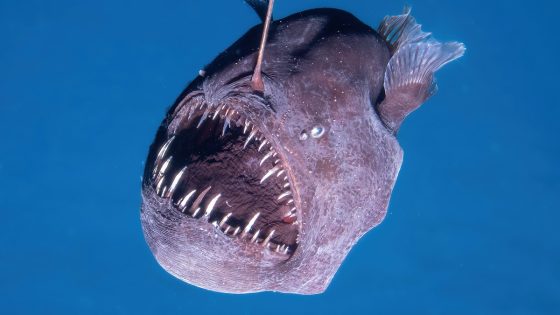On February 12, 2025, scientists captured rare footage of a black seadevil, also known as the humpback anglerfish, in the deep sea. This sighting is significant as it provides insight into the behavior and ecology of this elusive species, which is typically only known from dead specimens.
- Black seadevil may be preyed upon by larger animals.
- Brief sighting of black seadevil was significant.
- Historical capture of black seadevils dates back to 19th century.
- Black seadevils produce light via bioluminescent bacteria.
- Unique reproductive method involves male body fusion.
The black seadevil is a deep-sea fish that has fascinated researchers for years. Although known since the 19th century, most studies have been conducted on dead specimens. The recent footage provides a unique opportunity to observe its behavior in a living state, which is critical for understanding its role in the ecosystem.
Robison, a prominent marine biologist, suggests that the black seadevil may have been released by a larger predator, such as a pilot whale, seal, or jellyfish. This event is noteworthy because it highlights the complex interactions within deep-sea environments. Key details include:
- The black seadevil can produce its own light through a symbiotic relationship with bioluminescent bacteria.
- Many anglerfish species exhibit unique reproductive behaviors, where smaller males fuse to females for genetic exchange.
Despite the unfortunate fact that the black seadevil died shortly after the footage was captured, the brief observation allows scientists to gather valuable data. Understanding the biology and behavior of such creatures can inform broader ecological studies and conservation efforts in deep-sea habitats.
This rare sighting of the black seadevil underscores the importance of deep-sea exploration. As researchers continue to study these creatures, they gain insights that may lead to better conservation strategies and a deeper understanding of marine biodiversity.

































